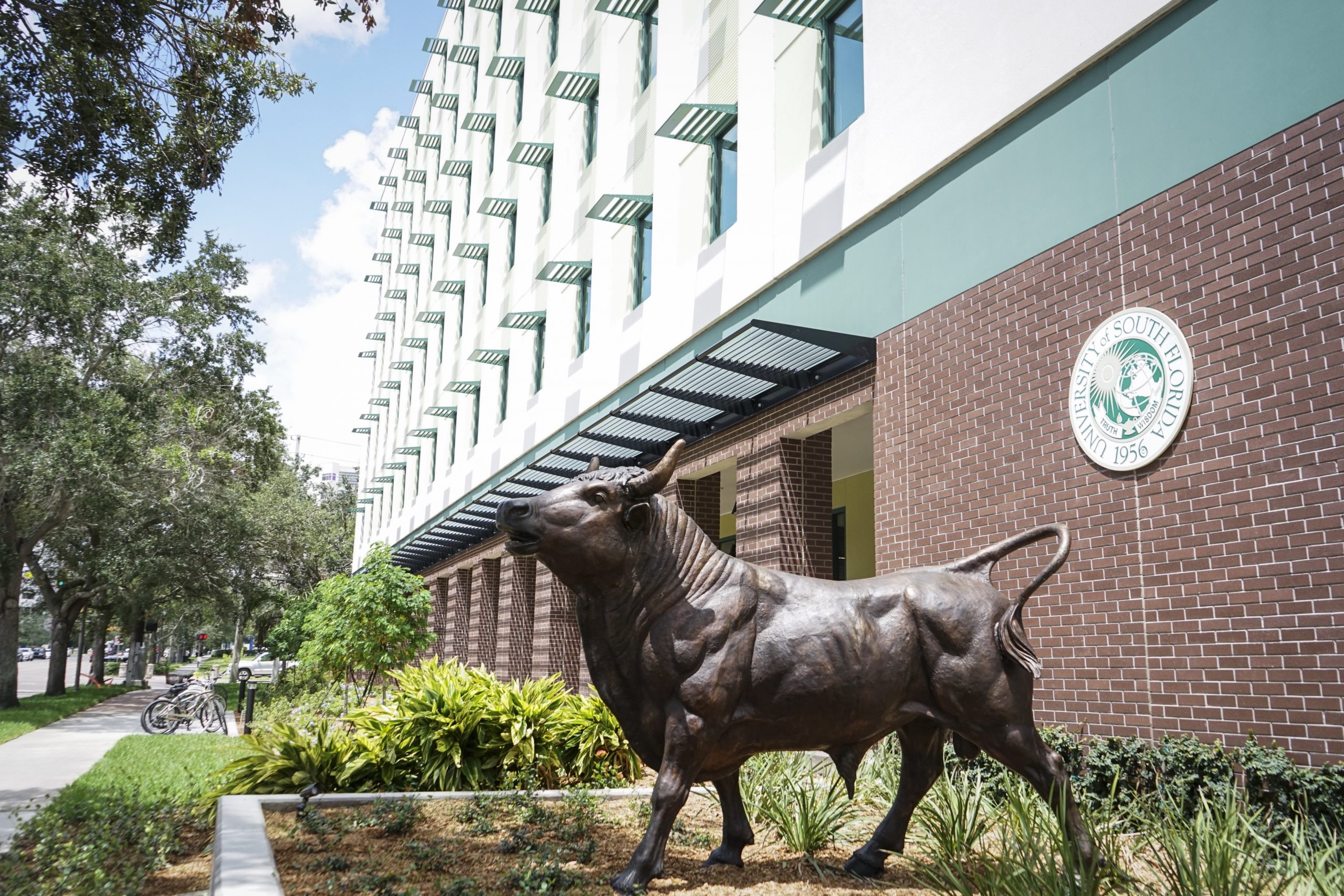Pictured above: Osprey Suites, USF St. Petersburg’s newest 375-bed residence hall, is fully occupied this semester.
Patrick Tobin | The Crow’s Nest
By Annalise Anderson
Hope for a traditional college experience remains high at USF St. Petersburg as the campus welcomes 791 students to its residence halls this fall – the largest residential population in campus history.
St. Petersburg’s residential student population has more than doubled since last fall. Due to consequences of COVID-19, Housing & Residential Education welcomed only 316 students to campus in fall 2020, leaving its three resident halls nearly empty.
Susan Kimbrough, director of Housing and Residential Education at St. Petersburg, said the record-breaking number may “ebb and flow a bit” in the next several days, but that the impressive resident student population has helped to reinvigorate the campus energy.
“Having the largest residential student population in our history is really special for everyone,” Kimbrough said. “It’s an exciting time to see so many students coming back to campus and really energizing to see our residential communities come to life as they fill up with students who are engaging in their communities both academically and socially. More students are calling our campus ‘home’ for the next nine months – living and learning in the residence halls, building friendships and making memories.”
St. Petersburg Regional Chancellor Martin Tadlock said community leaders are equally pleased with the number of residential and off-campus students this fall.
“Our city leaders, and business and chamber people are really excited to see 800-plus students living on campus, plus the additional several hundred living in the community coming back this fall. They are extremely excited about that,” Tadlock said. “St. Petersburg is an extremely vibrant, thriving downtown, and all of these students coming back really adds to that.”
Tadlock attributes the historic residential population to the opening of Osprey Suites, the campus’ new $31.5 million residence hall, and the projected enrollment of St. Petersburg’s largest first-time-in-college class since 2012.
Osprey Suites added 375 beds to the campus when it opened last fall. However, the pandemic forced the university to delay its opening and limit occupancy. Now, every bed is occupied.
According to Tadlock, there are still more than 100 open beds on campus – for now.
“I don’t think that will be the case next year,” Tadlock said. “I think those will feel the excitement of having that many students on campus. It just contributes to the vibrancy of the place and to the vibrancy of downtown.”
Prior to constructing Osprey Suites, St. Petersburg struggled with its limited housing arrangements for students. Once residence halls were full, students were placed in hotel rooms, apartment complexes or on a waitlist.
Tadlock hopes that increased housing options will eliminate the waitlist and continue to attract students to USF St. Petersburg.
“It opens up opportunities for students throughout USF to make decisions about where they want to live and where they want to pursue their degree,” Tadlock said. “Now, being one USF, students who apply get to pick and choose where they want to pursue their degree… We hope to appeal to those students who see this as a definite, distinctive place to go within USF that provides something that they can’t get in Sarasota-Manatee or in Tampa.”



